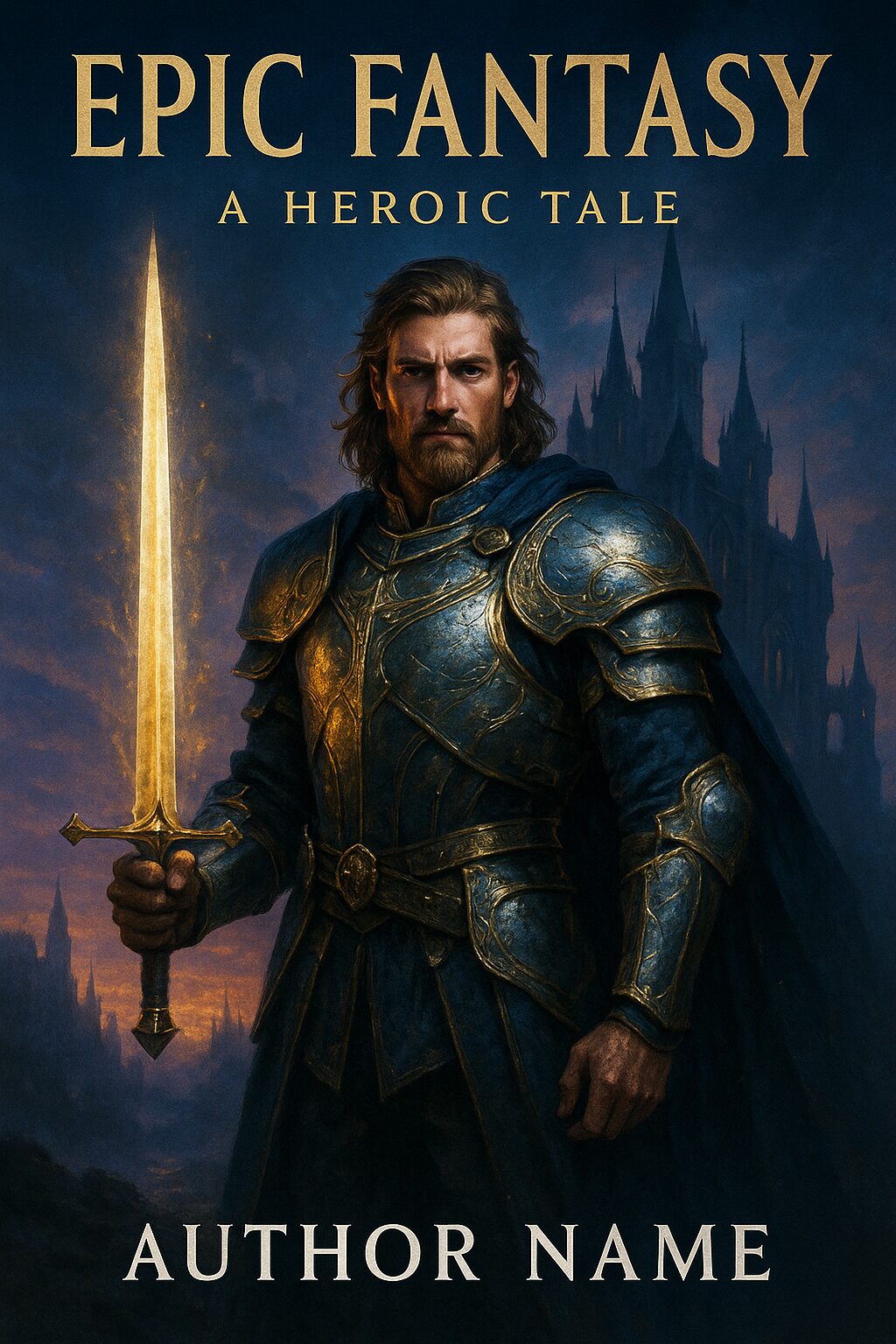
In the world of self-publishing and indie authorship, a visually captivating book cover can make or break a fantasy novel’s success. First impressions matter, and a stunning cover not only attracts readers but also conveys the essence of the story inside. However, commissioning a custom illustration or professional cover design can be expensive and time-consuming. Except if you choose to learn how to create book covers yourself, that too is time consuming.
That’s where Leonardo AI comes in — a cutting-edge generative AI tool that empowers authors, designers, and creatives to craft breathtaking fantasy book covers in just a few clicks. Using advanced image-generation models and simple text prompts, Leonardo AI allows users to generate high-quality, unique, and genre-specific artwork—without the need for advanced design skills.
In this guide, we’ll walk you through how to use Leonardo AI to create your own fantasy book covers, complete with example prompts, best practices, and tips to elevate your design game.
What You’ll Need
To get started with Leonardo AI, here’s what you’ll need:
-
Leonardo AI account (free or paid plan)
-
Internet connection
-
A story idea or concept for your fantasy book
-
Optional: A reference image or example style
-
Optional: Image editing software like Canva, Photoshop, or Fotor for post-editing
Step-by-Step Guide
1. Sign Up and Log In to Leonardo AI
Head over to Leonardo and create a free account or log in. The platform offers free credits per day and premium plans for more access.
2. Explore the Models Library
Leonardo AI features a wide variety of art models, including ones specifically designed for book covers. For fantasy covers, search for:
-
“Fantasy Art Style”
-
“Cinematic Style”
-
“Illustration Book Covers”
3. Choose a Canvas or Create New
Click on “Create Image” from the dashboard. Choose the aspect ratio typically used for book covers (e.g., 3:2, 2:3, or custom 1600×2560 pixels).
4. Write a Prompt for Your Fantasy Cover
A great prompt is the key to getting the result you want. Include clear details about:
-
Character appearance
-
Clothing or armor
-
Background setting
-
Lighting and mood
-
Composition
Example Prompt:
“A fantasy book cover illustration showing a blonde female warrior wearing silver and gold armor, holding a glowing sword, standing in front of a gothic castle at dusk, cinematic lighting, mystical atmosphere.”
You can also use negative prompts to avoid unwanted elements (e.g., “disfigured hands, blurry, text”).
5. Select the Right Model and Settings
Under “AI Models,” choose the most fitting model for fantasy or concept art. Adjust advanced settings like:
-
Prompt Strength (try 7–10 for detailed prompt following)
-
Image Guidance Scale
-
Number of images to generate (2–4)
Click “Generate” and wait for a few seconds.
6. Refine and Edit
Once the images are generated:
-
Pick the best one
-
Use the “Upscale” option to enhance resolution
-
If needed, use Outpainting or Inpainting tools to fix small issues
-
Download and optionally fine-tune it using image editors like Canva or Photoshop (for title text, author name, effects, etc.)
Pro Tips
To make the most of Leonardo AI, keep these best practices in mind:
-
Refine prompts with small tweaks to get improved results.
-
Use specific descriptors related to fantasy: “elven,” “arcane,” “battle-worn,” “enchanted forest,” etc.
-
Add typography later using professional fonts — don’t rely on AI to add text.
-
Experiment with angles, lighting, and moods to stand out.
-
Avoid overly cluttered prompts; clarity leads to better visuals.
-
Use image references or “Image to Image” for consistency across a series.
Pros and Cons of Leonardo AI for Fantasy Book Covers
| Pros | Cons |
|---|---|
| Easy to use, no design experience needed | Requires prompt crafting skills |
| Free plan available | Sometimes generates flawed hands or faces |
| High-resolution, professional-quality output | Limited credits on the free plan |
| Great for fantasy themes | No built-in typography tools |
| Fast image generation | Not always ideal for very niche styles |
FAQs
1. Is Leonardo AI free to use?
Yes, Leonardo AI offers a free plan with daily credits. Paid subscriptions unlock more image generations, priority access, and faster rendering.
2. Can I use the generated images for commercial book covers?
Yes. According to Leonardo AI’s terms, commercial use is allowed, especially for paying users. However, always double-check the latest licensing terms.
3. How long does it take to generate an image?
Typically, Leonardo AI takes less than 30 seconds per image. Upscaling and editing might take an extra minute or two.
Whether you’re an indie author, designer, or fantasy fan, Leonardo AI is a game-changer for creating beautiful, original book covers without spending a fortune. With a simple prompt and a bit of creativity, you can generate visuals that bring your fictional worlds to life — fit for Amazon listings, Kindle Direct Publishing, or your author website.
The best part? You don’t need to be a pro designer. Leonardo AI’s intuitive interface and powerful models do the heavy lifting, letting you focus on telling your story.
Ready to create your fantasy masterpiece?
Sign up for a free Leonardo AI account at Leonardo.ai and start designing your dream book cover today.
You can also explore their premium plans for more features and faster results. Bring your fantasy world to life — one cover at a time.








